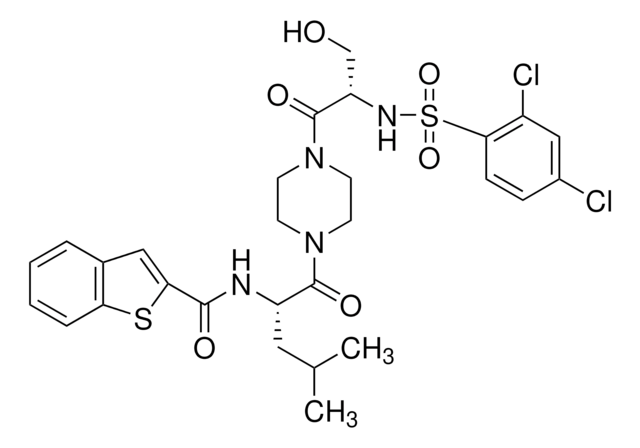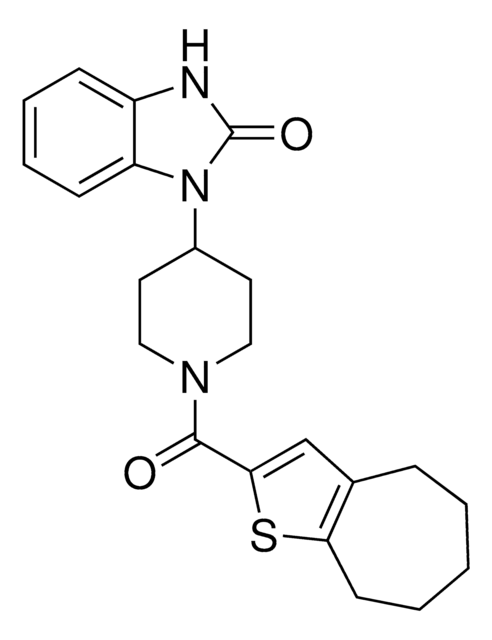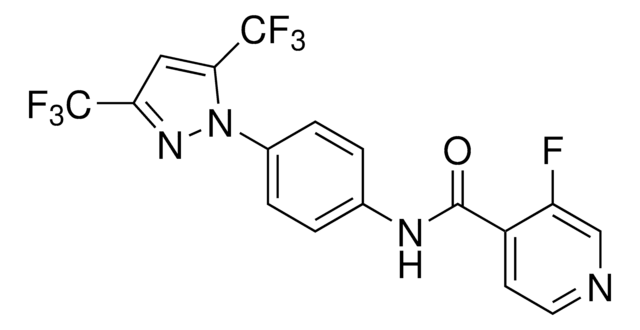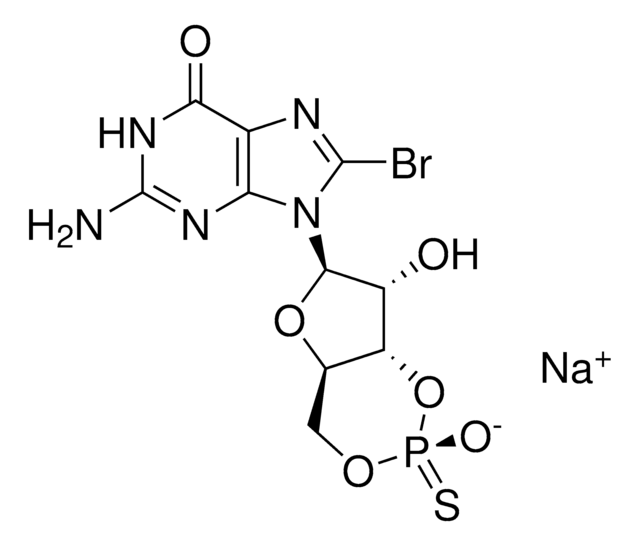P0032
Pyr3
≥98% (HPLC)
Synonym(s):
Ethyl-1-(4-(2,3,3-trichloroacrylamide)phenyl)-5-(trifluoromethyl)-1H-pyrazole-4-carboxylate
About This Item
Recommended Products
Quality Level
Assay
≥98% (HPLC)
form
powder
color
white to beige
solubility
DMSO: 20 mg/mL, clear
storage temp.
2-8°C
SMILES string
CCOC(=O)c1cnn(-c2ccc(NC(=O)\C(Cl)=C(\Cl)Cl)cc2)c1C(F)(F)F
InChI
1S/C16H11Cl3F3N3O3/c1-2-28-15(27)10-7-23-25(12(10)16(20,21)22)9-5-3-8(4-6-9)24-14(26)11(17)13(18)19/h3-7H,2H2,1H3,(H,24,26)
InChI key
RZHGONNSASQOAY-UHFFFAOYSA-N
Biochem/physiol Actions
Members of the canonical transient receptor potential (TRPC) channel family are ion channels which conduct Ca+2 and are activated by membrane receptor-mediated stimulation of phospholipase C (PLC) activity. However, TRPC3 and other family members are also activated by membrane-independent diacylglycerol (DAG). BTP1 and BTP2 are pyrazoles that block TRPC channels, but they are not specific for TRPC subtypes. This channel is implicated in various processes, including B cell receptor (BCR)-mediated Ca+2 oscillations, activation of nuclear factor of activated T cells (NFAT), and promotion of cardiac hypertrophy.
Storage Class Code
11 - Combustible Solids
Flash Point(F)
Not applicable
Flash Point(C)
Not applicable
Certificates of Analysis (COA)
Search for Certificates of Analysis (COA) by entering the products Lot/Batch Number. Lot and Batch Numbers can be found on a product’s label following the words ‘Lot’ or ‘Batch’.
Already Own This Product?
Find documentation for the products that you have recently purchased in the Document Library.
Our team of scientists has experience in all areas of research including Life Science, Material Science, Chemical Synthesis, Chromatography, Analytical and many others.
Contact Technical Service








